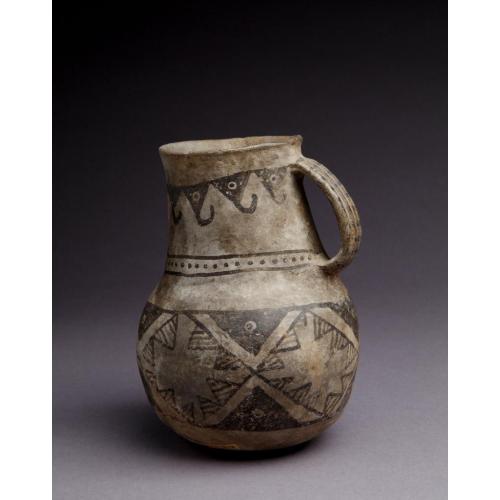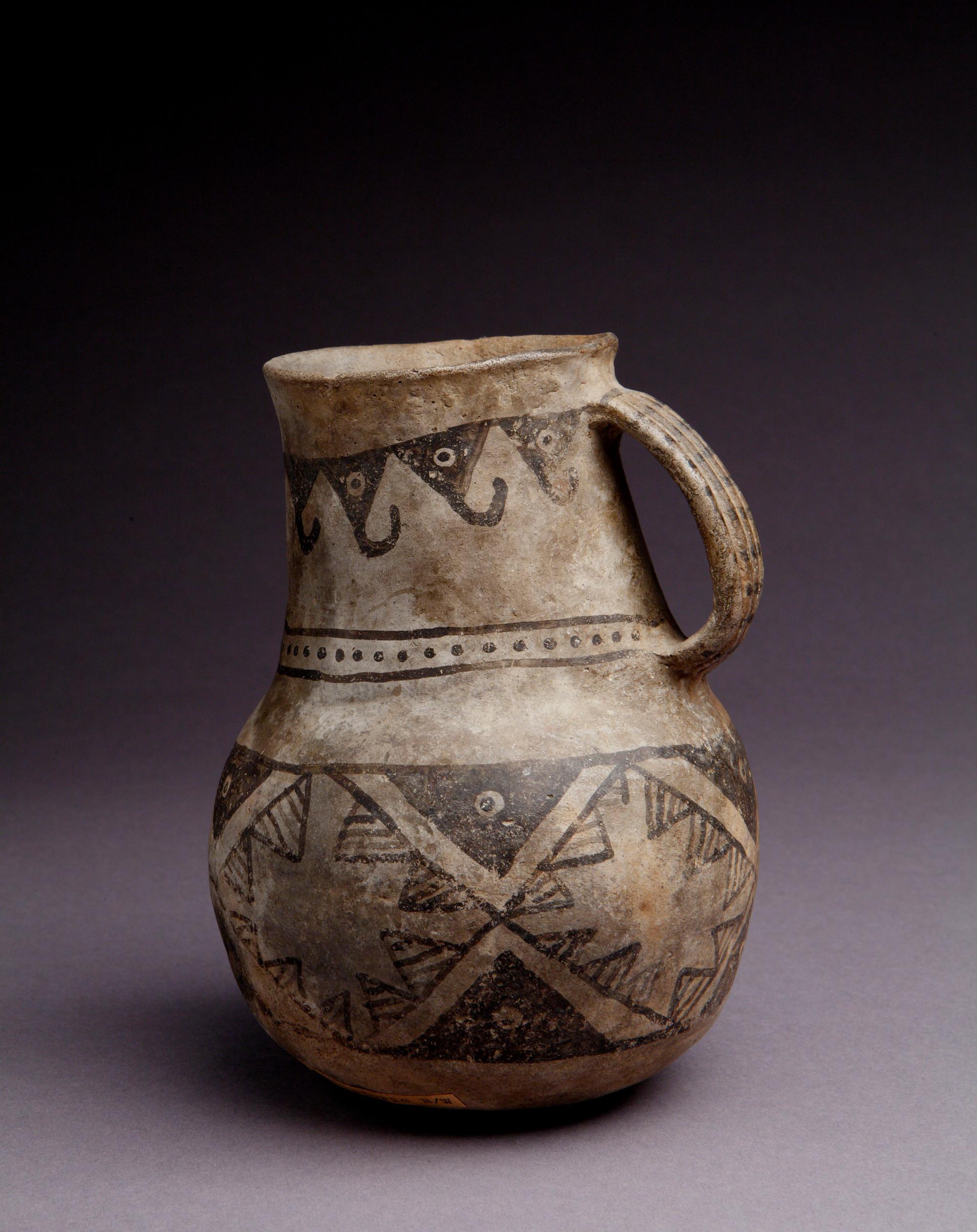
Photograph by Addison Doty. Copyright 2012 School for Advanced Research.
Pitcher
Date: Pre-Contact ?
Artist or Maker: Unknown
Dimensions:
DImensions: 17.8 × 12.7 cm (7 × 5 in.)
Weight: 0.6 kg (1.3 lb.)
Medium: clay | paints
Credit Line: Indian Arts Fund purchase for the permanent collection, 1928.
Place Made:
Valencia County or McKinley County, New Mexico, Southwest, United States, North America
Object Number: IAF.983
Not on view
Tribal Collection Review RemarksJim Enote and Octavius Seowtewa during collection review visit January 9 and 10, 2014 (Events Record “Collection Review: Zuni Tribe, Review 14”): The IARC staff wondered if maybe this was a Zuni piece, because of the designs, which is why they included it in the collection review. Mr. Enote and Mr. Seowtewa explained that they can’t say with certainty that it is; it may be from the Zuni area, or it might not. They suggested that an archaeologist might be able to identify it based on the clay and designs used.
Physical Description: Gray pitcher with black painted decoration. The strap handle is made of five coils decorated with black dots. The neck of the jar is decorated with eight bird heads; six of the heads have eyes, two don’t. At the bottom of the neck there is a two-line band with black dots that may represent planting holes/seeds/hail.
The body of the pitcher is decorated with two rows of five black bird heads with eyes; one row at the top of the decorative band, the other at the bottom. Between the bird heads, in the center of the band, are five diamonds that contain feather designs with rain lines in them.
The base shows moderate wear. There are two adhesions on the bottom. They are dark in color and have yucca fibers embedded in them. The dark substance appears to be pitch or sap. The designs on the piece are very old, similar to ones that Mr. Enote has seen on shards or pottery pieces that have come out of the ground near Zuni.
According to the participants in the Acoma collection review visit February 17-19, 2016 (Events Record “Collection Review: Acoma Pueblo Review 5”): There is a finger print on the neck of the jar (in the clay) to the left of the handle when looking straight the handle. The designs are similar to some Acoma designs specifically the mountains with the eye. The grey color may be due to aging. The participants feel it may have come from an Ancestral Puebloan culture.
In Collection(s)
The Indian Arts Research Center, in collaboration with Native American community scholars, strives to present accurate collections records. Records may be updated as new information becomes available and is reviewed with the Native American community having cultural affinity to particular items. Please write to iarc@sarsf.org if you have questions or concerns related to the documentation.
